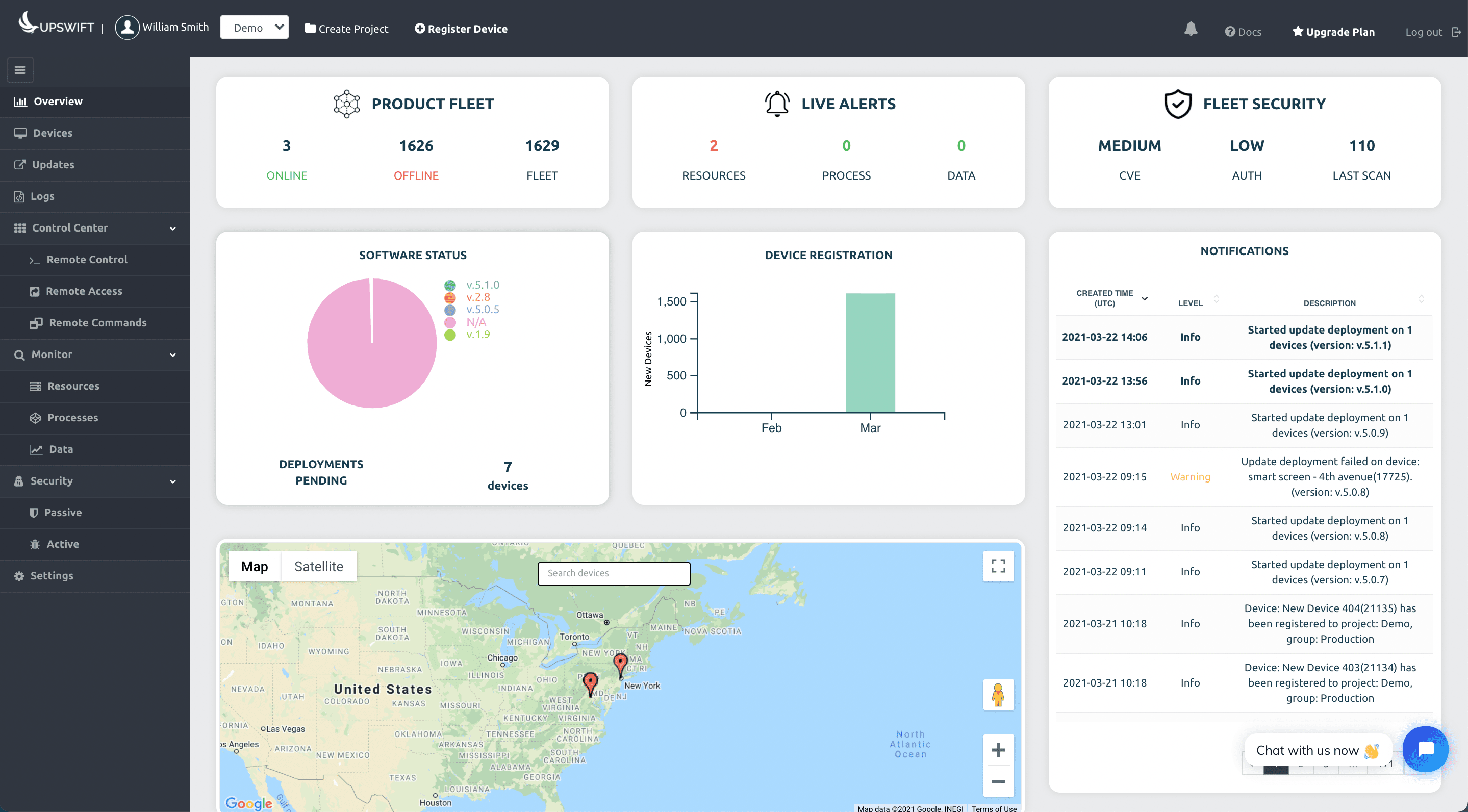Device management platform for embedded Linux Jetson Nano
Nvidia’s Jetson Nano is a Single Board Computer (SBC) that is capable of providing 472 GFLOPS of compute performance using its 64-bit Arm CPU, accelerated by a 128-core integrated GPU (Graphics Processing Unit). The device comes in a low power package (5/10W) which makes it ideal for anyone from any field to work on Machine Learning frameworks such as TensorFlow, OpenCV, PyTorch, Keras and even ROS (Robot Operating System).

The natively supported operating system by the Nvidia Jetson Nano is a flavor of Linux based on Ubuntu Linux, and has full support for all the hardware peripherals of the device.
In this post, we will be talking about the Jetson Nano’s uses in both industry and community, and how to manage single or multiple Jetson Nano devices running Linux operating system from a single platform and why you may need one.
Jetson Nano Applications
The Nvidia Jetson Nano SBC is mainly used in machine learning inference tasks such as image and video classification. This single board computer from Nvidia is also capable of running real time processing tasks such as speech processing and object detection, IP camera system management and controlling autonomous robots. While the Nano is suitable for small scale tasks, there are more powerful versions of Nvidia Jetson series of SBCs, naming TX2, TX2NX, AGX Xavier etc.
Managing Nvidia Jetson Nano Remotely, Why? – A real world example
Starting with a real world scenario, imagine you have an edge IoT device which includes an image classification task. For an example, a reverse vending machine which accepts beverage bottles and returns money/points to the user for each bottle they return. This machine would require some sort of an image classification algorithm for identifying if the inserted item is an actual bottle and what type of bottle/container it is. Using an Nvidia Jetson Nano, this task can be easily done by using a pre-trained bottle classification algorithm.
However, unless the machine learning model is an unsupervised learning algorithm, this model may need to be updated every once in a while to be compatible with the new types of containers that the machine may support in the future. Since the reverse vending machines could be placed all over the country, the developers can face issues such as;
- Having to visit the machines physically to update the software
- Having no way of knowing if and when a machine goes out of service
- Having trouble troubleshooting the software/hardware issues remotely etc.
These issues are not only applicable to Jetson Nano, but almost any Linux IoT device such as Raspberry Pi, Orange Pi and BeagleBone as well.
An all-in-one platform to manage all your edge Linux IoT devices at once
At JFrog Connect, we are providing you exactly that; an all-rounder, Platform-as-a-Service to manage all your Linux edge IoT devices from a single click of a button. We offer secured, easy to use set of tools to;
- Easily enroll dozens, hundreds or even thousands of devices at once
- Deploy remote updates (i.e. file system updates, container updates, system updates etc.)
- Monitor performance and set alerts
- Remotely log in and control your linux edge IoT devices
- Setup live alerts for unusual behaviour of your edge devices
- Ensure the security of your fleet and many more.
To sign up for a trial, please visit this link and start maintaining your devices with confidence!



